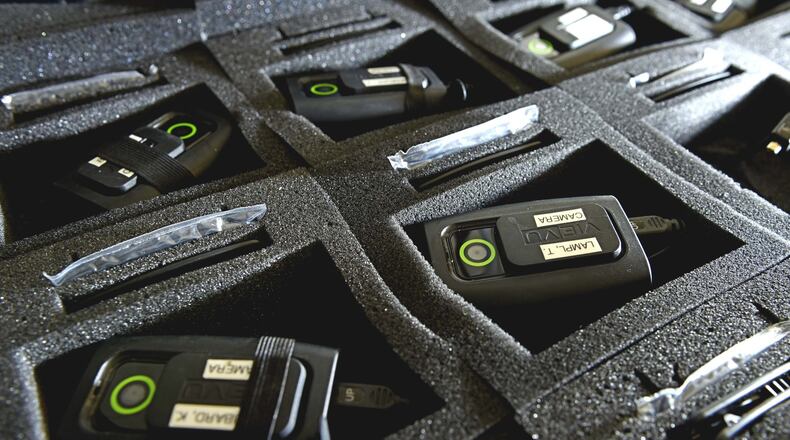The Butler County Sheriff’s Office received $141,409, the highest award out of the 131 law enforcement agencies that received grants from the Ohio Department of Public Safety. This makes three grants the office has received totaling $365,041.
“It was so expensive we couldn’t afford it but they made the money available and now we can afford it. We’re used to it and it works well,” Sheriff Richard Jones said.
The state received requests totaling $14.4 million and awarded nearly $4.6 million in this fourth round of funding, to help local law enforcement agencies pay for equipment and associated costs.
Butler County police departments received a total of $483,929, allowing Ross Twp. and Trenton to start new camera initiatives and bolster the programs in Hamilton, Miami University, Monroe, Oxford and West Chester Twp.
The sheriff’s Chief Deputy Anthony Dwyer said they have 107 cameras and only three spares. He said the new funds will help support not necessarily expand their existing program.
“We have to keep a stash of extra body cameras and then there’s always maintenance and software upgrades,” Dwyer said. “The body cameras have been pretty successful for us but they’re an expensive endeavor.”
Trenton Police Chief Patrick Carr agreed with the expensive part, telling the Journal-News the $52,319 state grant will only cover a portion of the cost since they must hire a person to handle the program at roughly $100,000 a year with salary and benefits. The cameras cost around $900 and they are starting with 18 to outfit all their sworn officers. They hope to have the program rolling in the fall.
“The overall costs are much more than the cost of the camera, there’s quite a bit that goes into it,” Carr said. “Overall it’s roughly $116,000 for the cameras and the software which is great, it’s over five years. But we also have to pay that employee which includes salary and benefits which ballpark, estimation, all said and done it’s probably going to cost the city $225,000 for implement of a body worn camera program.”
The sheriff implemented his program in 2023 with a three-year $401,712 contract with Axon Enterprises. Grantees were required to draft policies that establish guidelines for their use.
Here are some specific instances where the cameras must be rolling:
- All contacts with citizens in the performance of official duties including traffic stops, OVI investigations and field sobriety tests.
- All investigatory stops, suspicious persons or vehicle calls, vehicle searches and/or inventory searches.
- All jail booking of prisoners.
- Responding to domestic disputes, disorderly conduct or disturbing the peace calls.
- Miranda Warnings and responses from in-custody suspects.
- Physical or verbal confrontations or use of force situations.
The devices are most often seen as a way to provide transparency, especially when there are altercations between the police and public. Carr said the use of cameras is so commonplace now they are crucial to convicting criminals “this is the way of the future and this is what we have to do to be a progressive, professional police department.”
“It’s amazing how even some prosecutors give you the line you don’t have body worn cameras how do you expect me to prove this occurred, well how do you think people went to prison before body worn cameras,” he said. “It’s amazing that it’s proof beyond a reasonable doubt to convict someone, but with the body worn camera or cruiser camera it’s irrefutable proof now, you can’t deny this didn’t happen because it’s on the camera.”
With these new grant awards all of the police agencies countywide — with the exception of tiny Seven Mile — will have camera programs including Fairfield, Hamilton, Miami University, Middletown, Monroe, New Miami, Oxford, Trenton and Fairfield, Ross and West Chester township police departments all have body cameras.
About the Author
